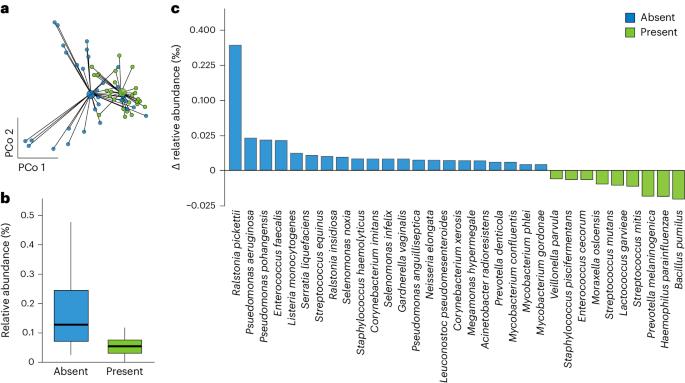Seagrass ecosystems as green urban infrastructure to mediate human pathogens in seafood
IF 25.7
1区 环境科学与生态学
Q1 ENVIRONMENTAL SCIENCES
引用次数: 0
Abstract
Urban greening offers an opportunity to reinforce food security and safety. Seagrass ecosystems can reduce human bacterial pathogens from coastal sources, but it remains unknown whether this service is conferred to associated food fish. We find a 65% reduction in human bacterial pathogens from marine bivalves experimentally deployed across coastal urban locations with seagrass present compared with locations with seagrass absent. Our model estimates that 1.1 billion people reside in urban areas within 50 km of a seagrass ecosystem. These results highlight the global opportunity to support human health and biodiversity sustainability targets. Seagrass ecosystems often co-occur with urbanized coastal regions, providing important filtration services that reduce human bacterial pathogens from coastal sources. This study examines whether such filtration function is transferred to food fish such as marine bivalves, and its global applicability.

将海草生态系统作为绿色城市基础设施,调解海产品中的人类病原体
城市绿化为加强食品安全提供了机会。海草生态系统可以减少来自沿海的人类细菌病原体,但这种服务是否会惠及相关的食用鱼,目前仍不得而知。我们在实验中发现,在有海草的沿海城市地区与没有海草的地区相比,来自海洋双壳贝类的人类细菌病原体减少了 65%。据我们的模型估计,有 11 亿人居住在距离海草生态系统 50 公里以内的城市地区。这些结果凸显了全球支持人类健康和生物多样性可持续性目标的机会。海草生态系统通常与城市化沿海地区共生,提供重要的过滤服务,减少来自沿海的人类细菌病原体。本研究探讨了这种过滤功能是否会转移到海洋双壳贝类等食用鱼身上,以及其全球适用性。
本文章由计算机程序翻译,如有差异,请以英文原文为准。
求助全文
约1分钟内获得全文
求助全文
来源期刊

Nature Sustainability
Energy-Renewable Energy, Sustainability and the Environment
CiteScore
41.90
自引率
1.10%
发文量
159
期刊介绍:
Nature Sustainability aims to facilitate cross-disciplinary dialogues and bring together research fields that contribute to understanding how we organize our lives in a finite world and the impacts of our actions.
Nature Sustainability will not only publish fundamental research but also significant investigations into policies and solutions for ensuring human well-being now and in the future.Its ultimate goal is to address the greatest challenges of our time.
 求助内容:
求助内容: 应助结果提醒方式:
应助结果提醒方式:


